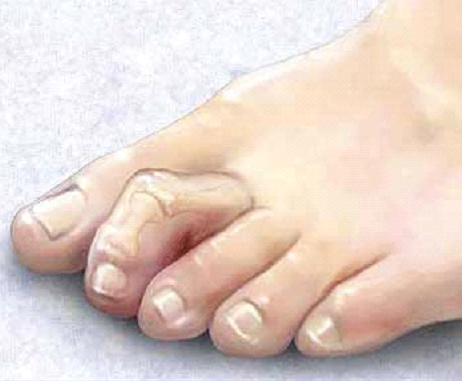Hammertoe and Mallet Toe Symptoms, Causes, Diagnosis and Treatment

What Is Hammertoe And Mallet Toe?
When there is a strange bend in the middle joint of a toe towards the floor, a hammertoe is likely to be the problem. Hammertoe usually affects the second toe but can occur on any toe. Eventually the middle toe joint is lifted and adapts a strange shape. On the other hand, mallet toe is said to occur when the joint nearest to the toenail bends. Similar to hammertoe, mallet toe also usually evolves on the second toe i.e. the toe right next to the largest toe. The major reason for hammertoe and mallet toe is the use of high heel sandals or tight shoes.
What Are The Symptoms Of Hammertoe And Mallet Toe?
Besides the strange shape that a toe may adapt due to hammertoe or mallet toe, the following symptoms are likely to occur:
- Pain.
- Difficulty in finding shoes that fits right.
- Corns or calluses may occur when the toe rubs against the inside area of the shoe or if the toe tip gets into contact with the ground.
These are the only symptoms likely to occur in hammertoe or mallet toe. In very severe cases, however, hammertoe and mallet toe may create difficulty in walking or maintaining balance.
What Causes Hammertoe And Mallet Toe?
The three common causes that develops hammertoe and mallet toe includes:
- Injuries that affects the foot or toe.
- Certain diseases, disorders and conditions like diabetes, rheumatoid arthritis and strokes.
- Shoes. Very tight shoes may lead to the contraction of tendons for a long time making it difficult for the toes to become straight. Eventually, toes remain in the strange position permanently. High heels also tend to develop hammertoe or mallet toe.
What Are The Risk Factors Of Hammertoe And Mallet Toe?
The following factors increase the risk of having hammertoe and mallet toe:
- The length of the second toe i.e. if it is longer than the big toe.
- The higher the age, greater the risk.
- Gender; women tend to have this condition more than men.
The only complications are permanently stiffed toes and painful corns and calluses.
How Is Hammertoe And Mallet Toe Diagnosed?
Diagnosing hammertoe and mallet toe is not a problem for the doctors. By observing the shape and bending position of the toe, doctors easily recognize the condition. However, in very rare cases doctors may require an X-ray. This x-ray is usually done to know exactly which joint is affected.
How Is Hammertoe And Mallet Toe Treated?
Doctors first suggest the victims to use simple techniques to cure hammertoe and mallet toe. In the early stages when the toe is flexible, they recommend the use of spacious and comfortable shoes. Moreover, they suggest using shoe inserts or orthotics to relieve pressure and pain. Certain exercises involving stretch of toes may also help treat hammertoe and mallet toe. If no simple treatment methods work, the final option is having a surgery. A surgery may even involve removal of some bones to straighten the toe.
By : Natural Health News




